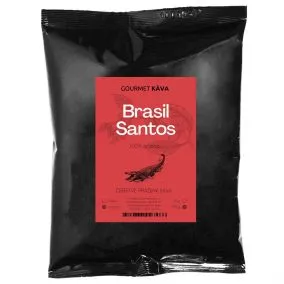What happens to coffee before it safely lands in your cup?
The journey of the coffee bean from the plantation to the coffee machine is neither short nor simple. Quickly make yourself a cup of fragrant coffee and join us as we explore the methods of processing coffee cherries (they are also called cherries because they resemble this type of fruit).
The "washed" or wet method
Following its trail, we wander into distant Ethiopia, the cradle of coffee cultivation. Ethiopian farmers used water from nearby rivers to process coffee cherries. Freshly harvested coffee cherries were washed, removing the poor-quality fruits. The remaining ones were fermented in a water bath for 18-72 hours. During fermentation, the pulp was separated, and then the beans were washed again with water and dried in the sun for 60-90 days. This process is still applied today.
A significant disadvantage of this method is the high water consumption. Fortunately, most farmers can now reuse water efficiently.
Processed in this way, the coffee stands out with its acidity, fresh flavor, with sweet undertones and a chocolate taste.
The "natural" or dry method
This method also has its roots in Ethiopia, this time in the drier areas of the country. When water is not available, the harvested coffee cherries are simply left to dry in a thin layer under the sun for three to six weeks. Farmers regularly stir and turn them during the drying process to prevent mold. Fermentation also occurs here, and sugars from the pulp move into the beans. Once the moisture content of the cherries reaches about 11%, the skin and pulp are removed, and the beans can be stored.
This method is highly dependent on weather, sun intensity, and other conditions that humans cannot easily control. As a result, each harvest has a slightly different taste, which can be an interesting aspect for true gourmets.
Processed this way, the coffee usually has a fruity to honey-like full taste, with hints of wine or alcohol due to drying the whole fruit with pulp and skin. The resulting coffee has as many enthusiasts as it has detractors. You'll see which group you belong to.
The "honey" method
This is actually a combination of the two aforementioned methods, the "honey" processing is particularly popular in Central America, with its origins likely in Costa Rica.
The processing starts by removing the skin, with some of the pulp left on the bean, and then the beans are dried under the sun. The "honey" name comes from the fact that the pulp softens under the sun and its consistency at a certain stage resembles honey. Depending on how much pulp is left on the beans, the processed coffee is divided into four categories: black, red, yellow, and white. The black has the most pulp, while the white has the least. At the end of the drying process, the remaining pulp is removed and the beans stored.
The result is a coffee with a sweeter taste than other processing methods, with rich flavors of syrup and pronounced acidity.
The "anaerobic" method
With this, the word "traditional" loses its relevance. It is a relatively new and innovative method, used only in recent years, with its basic principle being anaerobic fermentation, a process that takes place without air exposure. The cleaned beans are placed into special bags, which are then submerged in containers of water. The pressure of the water expels the last bits of air, and with a constant temperature, the coffee is left to ferment.
This usually takes several days, after which the beans are processed using one of the traditional methods: natural, washed, or honey. The uniqueness of the anaerobic method lies in the fact that during fermentation, compounds are produced that significantly influence the coffee's final flavor.
The result is an intense, full-bodied coffee with prominent notes of caramel, fruit, or chocolate.
The method of processing coffee plays a key role in the flavor and aroma of the final beverage. Some methods are as old as the first coffee plantations, while others are experimental and innovative. Whether you choose one that carries the imprint of cultural heritage or opt for a new approach, the important thing is to truly enjoy your coffee.
Lavado Coffee from the mountains in southeastern Cuba will surprise you with almost zero acidity and a strong flavor of bitter chocolate and caramel.
Lavado Coffee from the mountains in southeastern Cuba will surprise you with almost zero acidity and a strong flavor of bitter chocolate and caramel.
Guatemalan coffee Trés Maria stands out for its perfect balance and pleasant sweetness complemented by the taste of ripe tropical fruit.
Guatemalan coffee Trés Maria stands out for its perfect balance and pleasant sweetness complemented by the taste of ripe tropical fruit.
Extremely low acidity and chocolate taste are combined in Brazil Fazenda Rainforest coffee, by purchasing which you support the idea of an ecological and socially friendly way of growing coffee .
Extremely low acidity and chocolate taste are combined in Brazil Fazenda Rainforest coffee, by purchasing which you support the idea of an ecological and socially friendly way of growing coffee .
Ethiopia gave coffee its name after the Ethiopian province of Kaffa, so it is no surprise that one of the best coffees in the world is grown there.
Ethiopia gave coffee its name after the Ethiopian province of Kaffa, so it is no surprise that one of the best coffees in the world is grown there.
A unique blend of 5 types of Arabica from Central and South America, supplemented with quality robusta , for an espresso full of flavor, strength and quality crema.
A unique blend of 5 types of Arabica from Central and South America, supplemented with quality robusta , for an espresso full of flavor, strength and quality crema.
Cuba Lavado, whole bean Arabica coffee
Guatemala Trés Maria, whole bean arabica coffee
Brazil Fazenda Rainforest, whole bean arabica...
Ethiopia Sidamo, arabica coffee beans
Espresso blend Pura Vida, whole bean coffee



































































































